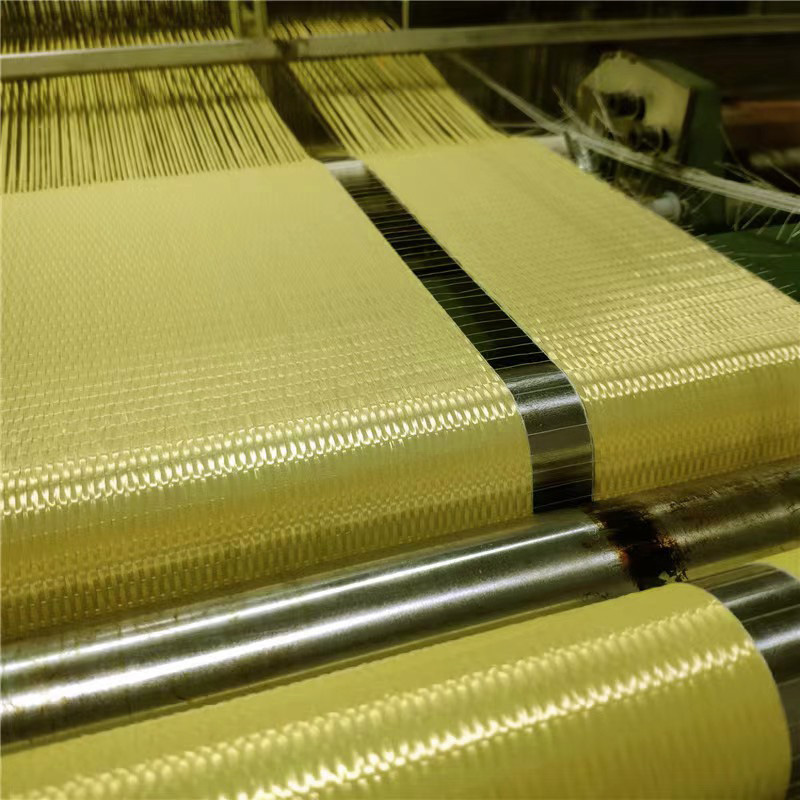
At present, the commonly used reinforcement methods mainly include paste steel plate, increase the cross-section, in vitro prestressing and so on. Due to the limitations of construction technology and material performance, the traditional reinforcement methods can no longer meet the engineering requirements of structural reinforcement. As a new type of engineering structural material, aramid fiber cloth has been proved to be an effective structural reinforcement method in various countries.

Aramid fiber is an all-aromatic polyamide fiber with a molecular structure of terephthaloyl-p-phenylenediamine polymer, containing aliphatic and aromatic skeletons, with a solid molecular structure and excellent properties of light weight, high strength, corrosion resistance, fatigue resistance, impact resistance, etc. It is a non-conductive material. Aramid cloth is a thin sheet made of aramid fibers arranged in one direction or two directions. Its ratio is about one-fifth of steel plate, tensile strength is more than five times of steel plate, the texture is very soft, is a lightweight, high strength, high elastic modulus, corrosion resistance, non-conductive materials, especially aramid cloth in all FRP composites have the best fatigue resistance, impact resistance and resistance to local load performance.
The common FRP composites at present are carbon fiber (CFRP), aramid fiber (AFRP) and glass fiber (GFRP). Currently, the commonly used FRP sheets are mainly aramid fiber and carbon fiber. Due to the low tensile strength and modulus of elasticity of glass fiber and its brittle texture, it is generally considered unsuitable for reinforcement of concrete structures alone. Due to the good toughness and high elongation of aramid fiber, the form of damage in the limit state is plastic damage, i.e., absorbing a lot of energy through its own deformation, which is especially suitable for seismic reinforcement. Aramid fiber is tough and can be made into cloth, plate, tendon, cable and lattice, so it has wider application areas than carbon fiber. In addition, aramid fiber is also a non-conductive material. In environments requiring high insulation and anti-magnetic properties, aramid fiber has a distinct advantage over carbon fiber as a structural material. Aramid fibers are very easy to construct and have excellent wettability with similar organic impregnating resins. Due to the good toughness and extension of aramid fiber under high stress state, it can significantly improve the dynamic load resistance and impact resistance of the structure. In this sense, the application area of carbon fiber is not as wide as that of aramid fiber composites. It is recommended to pay attention to the characteristics of the material in the design process and apply the right material in the right part to achieve the best results.

So what are the specific advantages of aramid fiber in terms of our problems
1. Impact resistance: Aramid fiber has a modulus of elasticity of 125 Gpa and good ductility (elongation of 2.4%). Aramid fiber first absorbs a lot of energy through deformation, and its damage form is plastic damage. The damage mode of carbon fiber is brittle damage. Therefore, aramid fiber is widely used in aerospace, military equipment, explosion-proof facilities, bridge pier reinforcement and other fields.
2. Dynamic fatigue resistance: carbon fiber has high tensile strength, but the failure of carbon fiber is brittle damage form, can only withstand long-term static load performance. Aramid fiber has unique advantages in the field of dynamic load resistance and fatigue resistance performance requirements. Therefore, in structural reinforcement, attention should be paid to the stress distribution characteristics in the structure, and aramid fiber or carbon fiber reinforcement should be considered. Meanwhile, among all FRP materials, aramid fiber has the strongest shear resistance, and the shear resistance of aramid fiber composite should be considered in shear reinforcement.
3. Corrosion resistance: Aramid composite material has good acid resistance and strong alkali corrosion resistance. The chloride ions in seawater are strongly corrosive to concrete structure, which can lead to concrete carbonization and steel corrosion. Therefore, aramid composites are widely used in some structural reinforcement and protection works of port and terminal projects.
4. Non-conductivity, non-magnetization: aramid fiber is a non-conductive material, so in carrying out such as precision instrument room, hospital development and for some projects with special industrial production plant, etc., the high requirements for insulation in the reinforcement of the building project, aramid fiber composite structure materials can be more suitable choice.
5. Convenient construction: the main construction steps of aramid cloth are: concrete surface treatment - brush primer - bottom layer dipping resin - sticky aramid cloth - outer layer dipping resin - outer layer protection. Compared with the traditional structural reinforcement technology such as paste steel plate and expanded section method, FRP reinforcement technology is easy to construct, short construction period and no large construction equipment is needed.